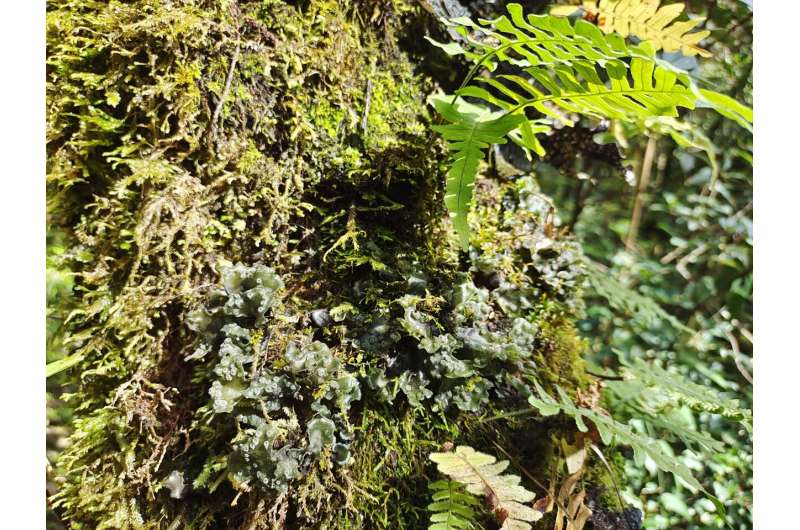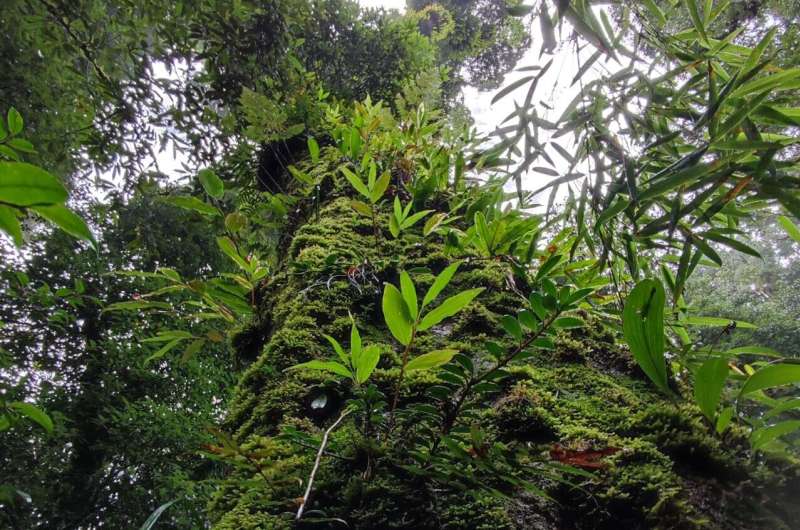This article has been reviewed according to Science X's editorial process and policies. Editors have highlighted the following attributes while ensuring the content's credibility:
fact-checked
trusted source
proofread
Study sheds light on differentiated nitrogen sources of co-occurring epiphytes in Chinese subtropical forests

Epiphytes, including lichens, bryophytes, ferns and spermatophytes, are a large and widely distributed group across many forest ecosystems. Acquiring enough nitrogen (N) to support their life processes in nutrient-poor canopies is a crucial challenge for epiphytes.
Researchers from Xishuangbanna Tropical Botanical Garden (XTBG) of the Chinese Academy of Sciences employed stable isotope analysis to explore N acquisition and differentiation among co-occurring epiphytes in Ailaoshan subtropical forest in Yunnan Province.
The study was published in Environmental and Experimental Botany.
The researchers collected materials from epiphytic cyanolichens, chlorolichens, bryophytes, and vascular epiphytes and potential N sources (phorophyte leaves, litterfall, canopy soil, ground soil, and precipitation) in similar microhabitats in secondary patches within primary forests.
They analyzed and compared the N concentrations and δ15N of the collected materials. Results suggested that functional group was the most important factor that could affect δ15N and N of epiphytes, reflecting differences in N acquisition, uptake and utilization strategies among different groups.
"Atmospheric or within-canopy-derived N was more important than soil-derived N for epiphyte growth," said Li Su from XTBG, corresponding author of the study.

Analysis of δ15N enrichment factors confirmed the involvement of various N sources in nutrients of epiphytes, leading to differentiation in N utilization among different epiphyte groups. Cyanolichens mainly acquired N through N2-fixation, while chlorolichens relied more on rainwater N. Bryophytes obtained considerable N from N fixation and ground soil, while vascular epiphytes acquired N from a wide range of sources, including ground soil, phorophytes and precipitation.
"Our study has shed light on differentiation in N sources of co-occurring epiphytes in Chinese subtropical forests and this could be one of the most important reasons for the survival of abundant epiphytes within nutrient-poor canopies," said Li.
More information: Tian-Hao Su et al, Greater differentiation in nitrogen sources is essential for co-occurring epiphytes under low-nitrogen canopy conditions, Environmental and Experimental Botany (2023). DOI: 10.1016/j.envexpbot.2023.105509
Provided by Chinese Academy of Sciences




















